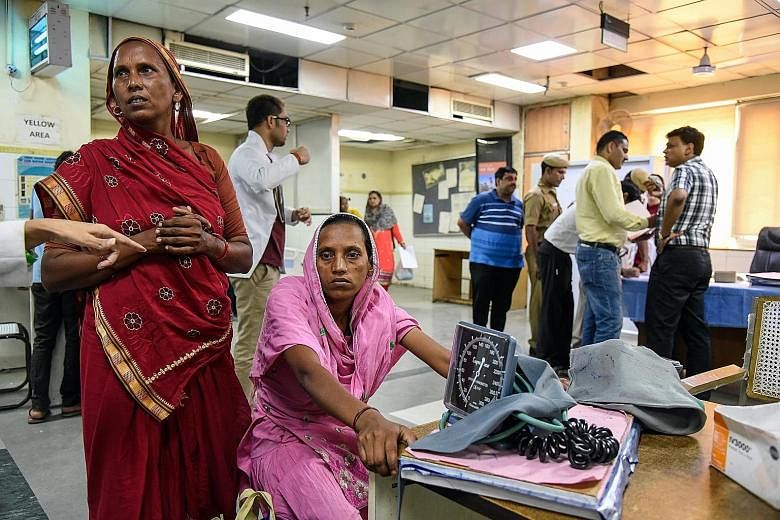NEW DELHI • As many of South Asia's already-scorching cities get even hotter, scientists and economists are warning of a quieter, more far-reaching danger: Extreme heat is devastating the health and livelihoods of tens of millions more people.
If global greenhouse gas emissions continue at their current pace, they say, heat and humidity levels could become unbearable, especially for many of the region's poor who work outdoors .
"These cities are going to become unliveable unless urban governments put in systems of dealing with this phenomenon and make people aware," said Ms Sujata Saunik, who served in the Indian Ministry of Home Affairs and is now a fellow at the Harvard University School of Public Health. "It's a major public health challenge."
A recent analysis of climate trends in several of South Asia's biggest cities found that if current warming trends continued, by the end of the century, wet-bulb temperatures - a measure of heat and humidity that can indicate the point when the body can no longer cool itself - would be so high that people directly exposed for six hours or more would not survive. In many places, heat only magnifies the more thorny urban problems, including a shortage of basic services, like electricity and water.
For India's National Disaster Management Agency, alarm bells rang after a heat wave struck the normally hot city of Ahmadabad in May 2010, and temperatures soared to 48 deg C. It led to a 43 per cent increase in mortality, compared to the same period in previous years, a study found.
Since then, some local governments have put in place simple measures. In Ahmadabad, city-funded vans distribute free water during the hottest months while in the city of Bhubaneswar, parks are kept open in afternoons so outdoor workers can sit in the shade.
Among the 100 most populous cities in the world where summer highs are expected to reach at least 35 deg C by 2050, according to estimates by the Urban Climate Change Research Network, 24 are in India.
Worldwide, by 2030, extreme heat could lead to a US$2 trillion (S$2.7 trillion) loss in labour productivity, the International Labour Organisation has estimated.
Delhi's heat index, a metric that takes average temperatures and relative humidity into account, has risen sharply - by 0.6 deg C in summer and 0.55 deg C during monsoons per decade between 1951 and 2010, according to one analysis based on data from 283 weather stations across the country.
Economist Joyashree Roy at the Jadavpur University in Kolkata said that already, most days in the summer are too hot and humid to be doing heavy physical labour without protection, with wet-bulb temperatures far exceeding the thresholds of most global occupational health standards. And yet, walk through the city on a stifling hot day in June, and you will find people hauling goods on their heads and constructing towers of glass and steel. Only a few people, she said, are protected in air-conditioned homes and offices. "Those who can are doing this. Those who can't are becoming worse," she said.
NYTIMES

